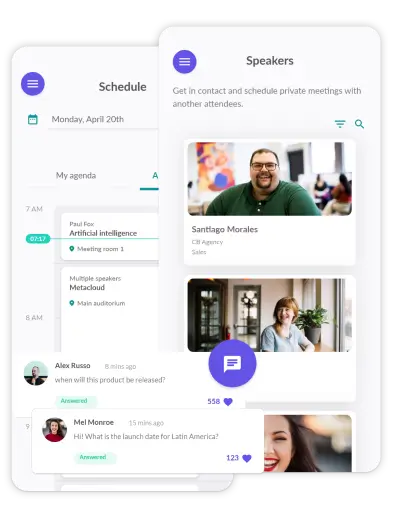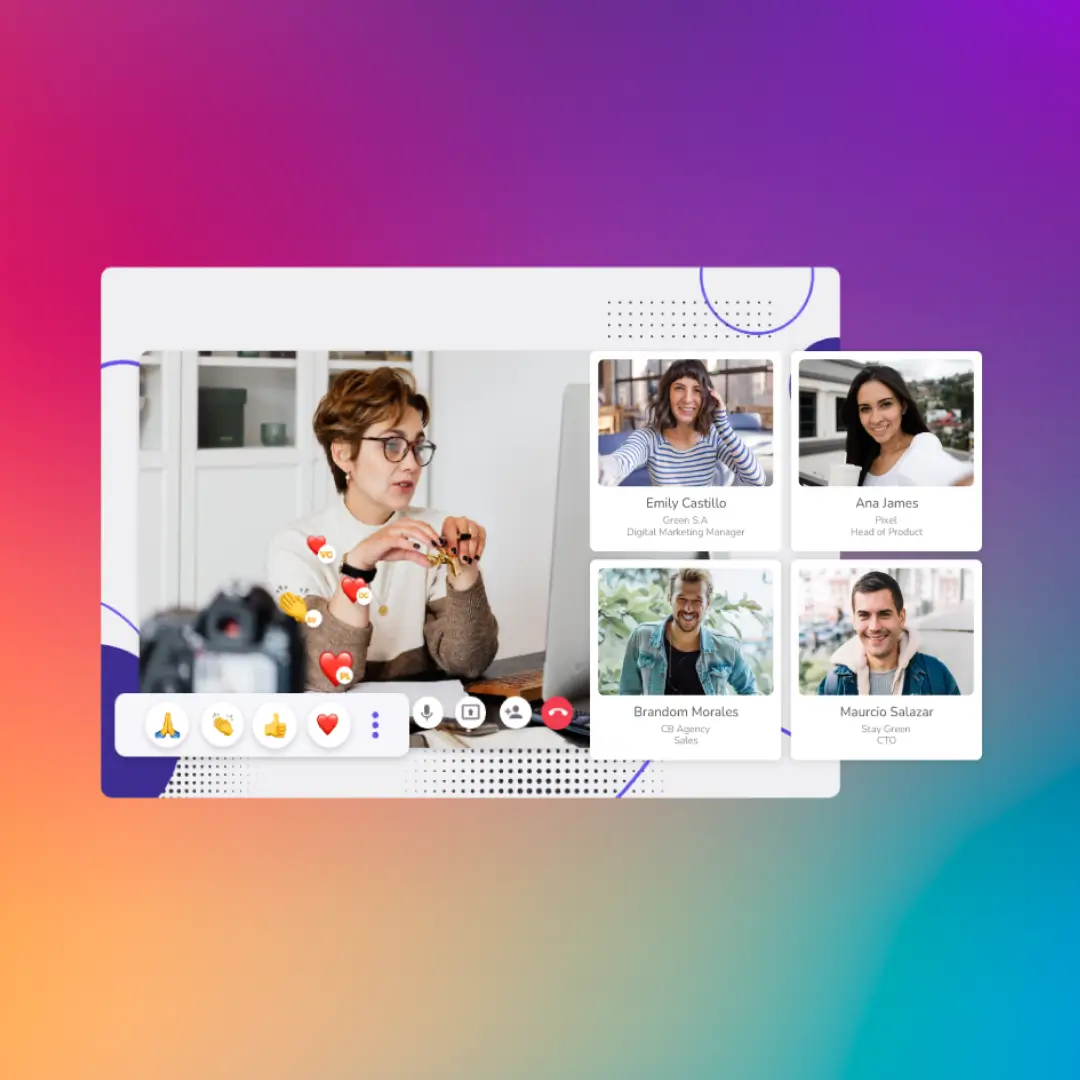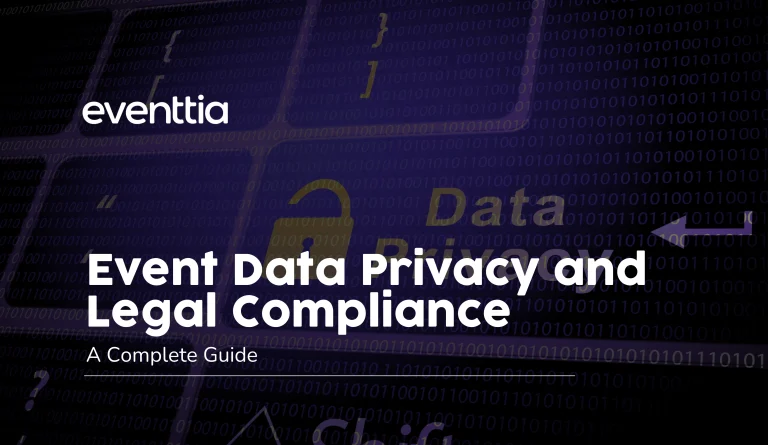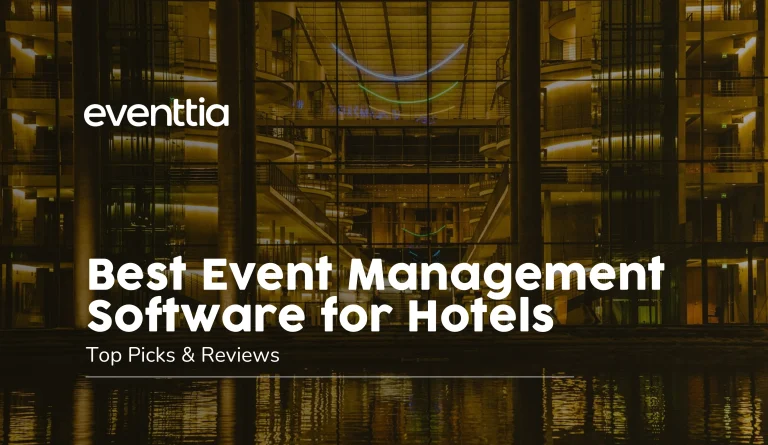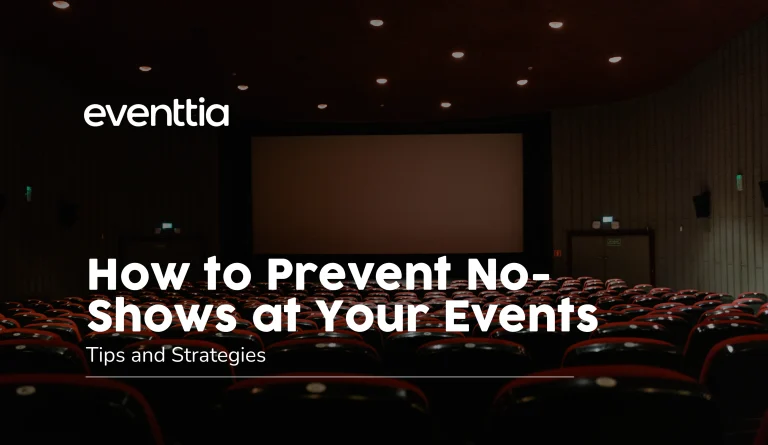Hosting successful events offers businesses a variety of benefits. In fact, stats show that 83% of brands enjoy increased sales from event marketing, and up to 74% of event participants agree that attending the event improved their opinion of the brand/company that hosted it.
However, how can you determine whether your event was a success or a failure? It’s often quite challenging, as there are a lot of things to think about, and what’s considered “successful” is often subjective and depends on your goals or priorities as a business.
One helpful tactic that many companies use to judge the success of an event is to create a post-event report.
This detailed guide goes over everything you need to know about post-event reports, including what they are, why they’re important, what they can include, how to write a report after an event, and more.
What is a Post Event Report?
A post-event report is a document that summarizes all the key details and information about an event. It also helps to determine if the event was worth the time and money it cost, if it met company goals, how attendees and vendors feel about it, and highlights what could be improved for future events.
The report is also a valuable tool for evaluating the effectiveness of the event and communicating its impact to organizers and shareholders. When someone reads your post-event report, you want them to have a strong understanding of both the good and bad aspects of the event.
While the report may have a balance of different information, what you focus on may also depend on who’s reading it. For example, if you’re sharing the report with sponsors, it could speak a lot about brand exposure and visibility, whereas reports for executives within your organization may be more focused on the financial ROI of the event.
Why Are Post-Event Reports So Important?
Some reasons why it’s so crucial to write a post-event report include:
- To measure the success of the event – The data in these reports helps you see how your event stacked up to your goals and projections, and measure its overall effectiveness. Some common event KPIs you may want to track and include in this report include your cost-to-revenue ratio, customer acquisition cost, conversion rate, and engagement rate.
- To improve future events – Post-event reports also contain information about what aspects of your event worked well, and which could use some work. These details are instrumental in making adjustments to ensure your future events are even better. And with in-person events being cited as the most effective B2B marketing channel by a LinkedIn report on B2B marketing, it’s crucial to ensure your future events are as high-quality as possible. Hybrid and digital events also appeared in the top 10, so there’s no doubt about how important events are for businesses in general.
- To demonstrate the impact of the event to others – These reports also help you describe the impact the event had, which is important for attracting sponsors, exhibitors, and partners for future events. If you can prove the event was a success, and that previous sponsors or exhibitors were happy with the return it provided, it’s likely to give potential partners or vendors more confidence about participating in the future.
What to Include in a Post-Event Report
When creating a post-event report, there are a few aspects you may want to include. Make sure to break the report down into digestible sections so the report is easy to follow and navigate.
Event Summary
The event summary gives a brief breakdown of everything included in the report. You may include a short overview of the event, the goals for it, the metrics you tracked, and the overall ROI of the event and how it measured up the expectations. In addition to financial ROI, you could also look at other things like how many leads you generated or the reach on social media.
You can also end the summary with some insights and recommendations on how to improve future events.
Marketing Details
This section could detail the type of marketing your company used to spread the word about the event. You may also highlight the amount of exposure you got and how you were able to attract sponsors and/or exhibitors.
Some examples of types of marketing you could mention include:
- Social media
- Paid ads
- SEO
- Radio or TV
- Email marketing
- Videos
- Press releases
Marketing Data Report powered by Eventtia
Logistics
The logistics section focuses on a variety of behind-the-scenes aspects of an event that help it go off without a hitch. This includes the venue you choose, transportation options, accommodations, the internet connection, the food and beverage options, the technology and equipment you need, and more.
This section reviews these logistics in detail and makes note of any logistical challenges you faced or problems you encountered while planning or hosting the event.
These logistics are especially important, as things like the venue and the location of the event play a major role in your event’s being memorable. In fact, a report found that when event professionals were asked “what makes a good attendee experience?”, 27% responded with the venue, and another 25% responded with the destination.
Attendance and Registration
This section is all about highlighting how many people attended the event, your registration numbers, and breaking down the demographics. Tracking your registration and attendance gives you a clear picture of who’s interested in your event, so you can better target that type of individual in the future.
In addition to attendance numbers and other quantitative data, it’s also a good idea to gather feedback from these attendees and learn the things they liked and didn’t like about your event. In fact, 84% of event planners use attendee satisfaction as a KPI, and 82% use attendee engagement as a KPI.
Using Eventtia’s attendee engagement tools, like live polls, post-event surveys, and real-time feedback dashboards, you can collect deeper insights and measure satisfaction across various touchpoints. All data is stored in a centralized system, making it easy to include in your post-event report.
Research shows that event planners believe that increasing overall attendance is the top metric to measure event success, so tracking your attendance from event to event is crucial.
Sponsor and Exhibitor Information
This part of the post-event report breaks down the exhibits that were the most popular, which ones struggled, and how many interactions these exhibits had. It’s also important to learn about the exhibitor and sponsor experience at your event.
For sponsors, you could ask them if they’re happy with the sponsorship and their financial return, how many relationships they were able to start or strengthen, whether they were satisfied with where their brand was displayed, and even if they’d be willing to return in the future.
When asking exhibitors about their experiences, you could ask about foot traffic, how many products they sold, and whether they’re happy with the leads they generated.
Financial Breakdown
This section is where you may break down the finances of the event, including your revenue, costs, and profit. You could have exact numbers for each of your expenses, and compare them to how much the event brought in, not only from ticket sales but any other way you generate revenue, as well.
Oftentimes, it’ll be this financial breakdown that shows you whether or not it’s viable to host another event in the future or not.
Example of a Post-Event Report
The following is a very brief example of what your post-event report may look like. This sample post-event report is based on a hypothetical video game and board game convention.
Event Summary
We hosted a 3-day gaming convention that had 100 exhibitors and over 5,000 attendees. It met and exceeded expectations in terms of financial return, lead generation, and exhibitor experience. The event was also received well by attendees, though some had issues with the food options.
Marketing
We marketed the event on social media (Instagram, X, and Facebook) with biweekly posts, and used email marketing to reach out to those on our list. Many of our exhibitors and sponsors also made public posts on Instagram and X about the event. In total, our own social media posts engaged 1,500 people, and 175 people used our hashtag on social media ahead of the event. We initially got in contact with most sponsors and exhibitors via social media.
Logistics
The venue worked well in terms of size and layout, and our team was happy with the event technology used for the event. No one experienced any issues with the Wi-Fi, people enjoyed the accommodations, and all of the vendors were able to set up and take down their exhibits quickly and without issue.
However, some attendees weren’t happy with the catering we chose, so keep that in mind for future events.
Attendance/Registration
Overall, there were 5,128 attendees at the events, compared to 5,745 that registered, which is a 10.7% attrition rate. 64% of the attendees were male, and most were in the 25-34 and 35-44 age ranges, at 32% and 29% respectively. Attendee satisfaction was high, as 85% said they had a good time and 70% said they would attend a future event.
Sponsor/Exhibitor Details
On average, our exhibitors had 250 interactions per day, and many were happy with the connections, leads, and sales that they made throughout the event. As for sponsors, they were happy with the return on investment and the amount of reach they were able to achieve.
Financial Breakdown
The company spent $375,000 putting the event on, between renting the event space, managing the facilities, paying staff and security, and other costs.
The event brought in $550,000 from ticket sales, concession purchases, exhibitor fees, and merchandise sales. As a result, the profit from this event was strong, which is an encouraging sign for future events.
Best Practices for High-Quality Post-Event Reports
Here are a few tips and best practices to help your reports be as impactful as possible.
Use Technology to Gather More Insights
If you use technology as a major part of your event planning and management strategy, it goes a long way in helping you develop better reports. This is because using technology helps you track and monitor several metrics like revenue, attendance, satisfaction, social media engagement, leads generated, and more.
Without using event management software to keep track of and gather information, you won’t have nearly as many precise insights at your disposal to use in the report.
As a result, many event organizers trust technology to help ensure their events run smoothly. In fact, over 85% of event planners use some kind of event management software, and only 2% of organizations aren’t using any type of event technology.
As for the types of technology that event and meeting professionals plan to use in 2025, a survey found the following results:
- 50% plan to use AI
- 41% plan to use mobile apps
- 38% plan to use QR codes
- 36% plan to use onsite check-in tools
- 33% plan to use live polling and feedback tools
- 31% plan to use virtual reality
- 25% plan to use wearable tech
- 23% plan to use digital photo booths.
Event Data Management powered by Eventtia
To streamline and simplify your tech usage, consider using a comprehensive event tracking solution like Eventtia. It gives you access to several of these technologies and features, without having to constantly change platforms or switch to different tools.
Find the Right Blend of Detail and Concision
The best post event reports find just the right blend of detail and concision. It needs to have enough information to inform people and help them make better data-driven decisions, but not be too long or repetitive.
If it’s too lengthy or boring, it won’t keep readers engaged and may not have the impact you wanted it to. But if it’s too short and basic, it may not contain enough details or actionable insights to have much of an impact on your company and any future events you hold.
Use Visuals to Make the Report More Engaging
Keeping people engaged as they read your report is crucial to ensure they’re able to make it through the entire document. One of the best ways to keep people interested is by using visuals throughout the report.
This could be graphs that detail the demographics of the event, a bar chart that highlights your costs, or even infographics that present certain stats or figures in a more appealing way.
Post-Event Report Mistakes to Avoid
These are a few common post-event report mistakes you need to ensure you avoid.
Avoiding Feedback (Especially Negative)
Getting feedback from everyone, from attendees to sponsors, is important to learn how the event went in their eyes. If you don’t collect feedback, you won’t have nearly as much data at your disposal to identify areas of improvement for future events.
Also, when you do collect feedback, make sure to consider it all and never disregard negative comments or concerns.
While it can be tempting to focus on the good feedback you get about the event, it’s important not to neglect the bad. Even negative feedback has value as it highlights aspects of your event that your participants didn’t enjoy, which can help you fine-tune your approach going forward.
Focusing on One Type of Data
When analyzing your event and writing your report, it’s important to focus on both qualitative and quantitative data. While quantitative data like attendance, revenue, costs, and social media metrics are important, qualitative data captures insights and details that the numbers simply can’t provide.
It details the opinions, thoughts, and feelings of everyone involved in the event, and gives you a more complete picture of its success or failure.
Not Being Transparent About Your Difficulties
If you encounter any issues before, during, or after the event, you need to make a note of these in the report. While some companies only want to focus on the positives in these reports to impress stakeholders, it’s important to be honest about failures or challenges.
This helps to ensure you won’t make similar mistakes in the future, and demonstrates to readers that you’re aware of what went wrong and are committed to improving in the future.
Turn Insights Into Better Events
Post-event reports aren’t just paperwork, they’re powerful tools for learning, improving, and making smarter decisions for future events. Whether you’re measuring ROI, tracking attendee satisfaction, or analyzing logistics, a well-crafted event report helps you turn insights into real impact for your attendees.
By following the steps and best practices in this guide, you can create reports that not only justify your investment but also inspire better events in the future.
And if you’re looking for an event management platform that streamlines reporting, data collection, and everything in between, Eventtia has you covered.
Frequently Asked Questions: How to Write a Post Event Report
Still interested in learning more about post-event reports? If so, be sure to check out these common questions and their answers.
Source:
Overall:
"Very comprehensive and high-performing platform for managing your in-person, online, or hybrid events."
Arno Vaissiere
WIRED
When to create a post-event report?
You may want to write your report within a week or two of the event ending, though larger or more complex events may take longer to gather the important insights and data.
What kinds of events can you write a post-event report for?
You can write these reports for essentially any event, including conferences, conventions, large meetings, networking events, and several others.
Discover how Eventtia helps world-leading brands digitize and scale their events
Learn more
Share

